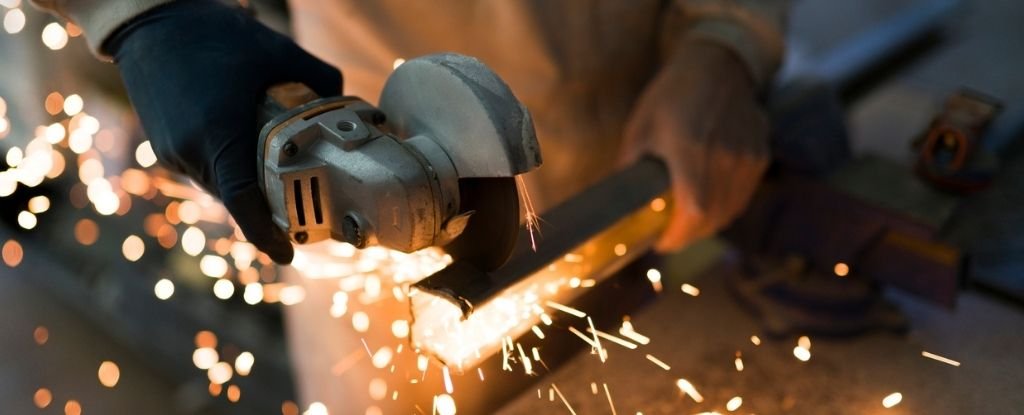Products You May Like
‘Green steel’ might sound like an oxymoron, but it’s a phrase you’re bound to be hearing a lot more of in the next few years.
On Wednesday, the world’s first, carbon-free steel was delivered to the truck-maker AB Volvo in Sweden.
It’s only a trial run, and, admittedly, a bit of a media stunt, but Volvo says it has ordered the materials to start production on a new fleet of green steel vehicles.
According to SSAB, the Swedish steelmaker responsible for the green steel, the ribbon-cutting event is an “important step towards a completely fossil-free value chain from mine to finished steel.”
HYBRIT, or Hydrogen Breakthrough Ironmaking Technology, was made possible through a joint venture between SSAB, the state-owned utility Vattenfall, and the government-owned mining company LKAB.
It’s one of the first projects in the world to try using renewable hydrogen to produce green steel at a pilot plant in the northern city of Luleå, and it appears to be successful.
By 2026, the hope is to show what HYBRIT can do at an industrial scale, and given that SSAB currently produces 10 percent of Sweden’s carbon emissions on its own, the consequences of that could be huge.
“The first fossil-free steel in the world is not only a breakthrough for SSAB, it represents proof that it’s possible to make the transition and significantly reduce the global carbon footprint of the steel industry,” said Martin Lindqvist, President and CEO of SSAB in a recent announcement.
“We hope that this will inspire others to also want to speed up the green transition. Industry and especially the steel industry create large emissions but are also an important part of the solution.”
Like cement, steel is one of those materials you don’t really notice is all around you until you start to look for it. Then, you’ll find it’s just about everywhere: It’s your dinner table in the form of cutlery, in the wind turbines on the hill, in the bridges you cross every day, in the buildings you enter, in the cars you drive, in the food cans you buy.
It also requires a lot of energy to make. On average, every ton of steel demands about two tons of carbon dioxide, globally. Each year, steel production accounts for more than 7 percent of the world’s greenhouse gas emissions, which is slightly greater than the emissions of all the cars in the world.
By 2050, the steel industry alone is on track to gobble up 50 percent of the carbon budget needed to keep warming to 1.5°C, which means it’s a great place to start when it comes to cutting back our emissions.
While steel has one of the highest recycling rates in the world, new steel will ultimately need to be forged to meet demand. If we can do that in a greener way, we could make huge inroads towards our climate goals.
Today, the vast majority of steel is made in a blast furnace, often using a process that relies on coal and leads to CO2 emissions. Hydrogen can be introduced into this process to reduce these emissions.
Already, hydrogen energy is being used to fuel electricity and vehicles in some parts of the world, but most of the hydrogen used in oil refining and chemical production comes from fossil fuels. In the United States, hydrogen comes predominantly from natural gas.
All of these methods produce emissions, but there are greener alternatives. Hydrogen can also be made from clean energy. If electricity coming from wind turbines or solar panels splits hydrogen from water, its power can be used to reduce iron ore to metallic iron without producing any carbon emissions at all.
Yet despite growing much cheaper over the years, this process to produce ‘green hydrogen’ is still many times more expensive than it is to use fossil fuels or natural gas.
That cost has proved a barrier for many nations. In Australia, for instance, the government recently rejected an application to build the largest green hydrogen and ammonium plant in the world.
However, in 2019, the EU set a goal of becoming climate neutral by 2050. To get there, 23 hydrogen steel projects are either underway or about to start production across multiple countries.
In the years to come, these ventures could be selling hundreds of thousands of tons of green steel, made without any fossil fuels.
HYBRIT’s green steel is merely the first to be delivered, but it might not be the first to hit the market. H2 Green Steel, another Swedish-based venture, plans to build a renewable hydrogen plant and make green steel by 2024.
In the United States, President Biden has promised to drive down the cost of green hydrogen so it can compete with natural gas.
But if Europe is going to have green steel available for purchase in the next five years, it surely won’t be long until other nations demand the same.
“By industrializing this technology in the future and making the transition to the production of sponge iron on an industrial scale, we will enable the steel industry to make the transition,” says Jan Moström, President and CEO of LKAB.
“This is the greatest thing we can do together for the climate.”
